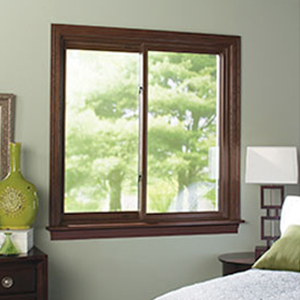Condensation is a sure sign that your windows should be changed.
Windows are an important obstacle between the severe, variable weather conditions outside as well as our calmness, consistent residence temperatures. Home replacement windows quite often have a fifteen to twenty-year life expectancy, so luckily we do not have to think about changing them frequently. However recognizing when it's time to replace them can be difficult. You could be tempted to try and hold out for another season if you recognize the warning signs. However changing your windows now could aid you prolong the life of your entire home as well as maintain you and also your household cozy all winter long. Right here are a couple of indications that your home windows are not prepared for the harsh wintertime this year.
Drafty Residence
As home windows age, they begin reducing, damaging, and also not shutting effectively, allowing air from inside your home to spurt. As a result of this, your HEATING AND COOLING system has a hard time to keep your home at a constant temperature and sends your power expenses escalating. If your home is noticeably more breezy or your electric bills appear to be increasing this fall for no noticeable factor, you might want to have your home windows had a look at.
Difficult to Lock
We appreciate having our home windows open when the weather behaves, but they should not be open all the moment. During the winter months and when we're away, your windows need to be shut in place and also secured. Windows with malfunctioning locks is a major security risk that need to be treated asap to keep your family secure. Often the lock can be fixed cheaply, however if the window is having trouble staying open or closed or is dripping air, it could be best to simply mount a new one.
Condensation Forming
The greatest sign that you need brand-new home windows is when condensation begins to form on the within your home window when it is shut and secured. This is indicative of a likely permanent defect and must be attended to as soon as possible to avoid the possible growth of mold in the framework, which could infect other locations of your home and also create severe damages when left unattended.
Have you just about had it with your old, drafty windows?
Is this the year you've determined Replacement Windows to lastly replace your windows? Replacing your home windows with new ones includes lots of advantages, consisting of a power efficiency boost, better ventilation, and much better high quality of light in your home. The National Window Ranking Council accredits as well as classifies home windows (along with doors as well as skylights) on their performance as well as energy effectiveness. When you're shopping for new home windows you'll see these scores on the NFRC tag. In this week's blog site, we'll discuss the best ways to read this label making certain you're making an educated choice on your brand-new home windows.
Heat Gain and also Loss
The very first 3 residential properties on the label have to do with exactly how the home window executes when it come to heat gain as well as loss. Windows gain as well as lose heat in three means:
Direct conduction with the glass.
Radiation of heat from the sun into your house, and also outdoors from items in the house.
Air leakage with as well as around the window.
U-factor
This is "The rate at which a window, door, or skylight conducts non-solar heat flow." The takeaway here is "The lower the U-factor, the much more energy-efficient the window, door, or skylight."

Solar Warm Gain Coefficient
The SHGC informs us how much radiation is admitted via the window as well as released as warm in the residence. The reduced the number, the less warmth is transferred. However, this does not always suggest you want a reduced SHGC. For instance, since a higher SGHC implies the window allows much more warmth in, you could allow extra solar warm inside in the winter season, which can reduce your heating requirements. In this instance, the climate you reside in will play a major consider choosing an SHGC ranking.
Air Leak
This measures how much air the window allows relative to a specific stress distinction across it. The lower the ranking, the less air leakage.
Sunshine Passage
The next 2 ratings gauge just how much light a home window lets into your home.
Noticeable Transmittance (VT).
This number in between 0 as well as 1 procedures what fraction of the range of visible light the window lets through. The higher the fraction, the extra light the home window will permit. If you wish to utilize daylighting in your home, you'll desire a greater portion. If you wish to reduce indoor glare, you might desire a reduced portion.
Light-to-Solar Gain.
This number is the ratio in between the SHGC as well as the VT. "The higher the number, the extra light transmitted without adding too much amounts of warmth.".